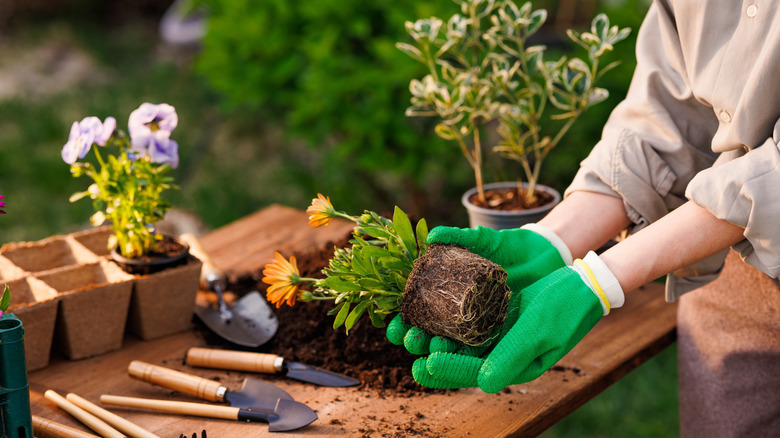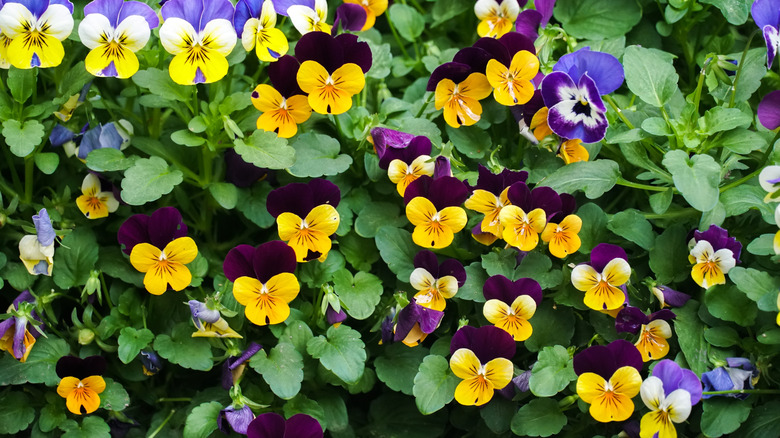The Beautiful Flower You Can Plant Now For Colorful Blooms That Last Into Winter
Just because summer is officially winding down doesn't mean that your garden has to lose its charm. If you're looking for one last planting project before the chill finally sets in, there are a number of outdoor plants that can still thrive into winter. Among these flowering plants are pansies, a low-lift option that can stretch your garden's color well into the colder months. The cheerful blooms are famous for their bold faces, cool-weather resilience, and long-lasting appeal. Whether you tuck them into containers, line your walkways, or fill in a flower bed, they can instantly perk up a tired landscape. Even better, they're often widely available at garden centers this time of year, just waiting to brighten up your space.
Fall is actually the best time to plant pansies, especially in USDA Zones 6 through 8, and sometimes 9. The cooler air and still-warm soil allow their roots to establish quickly, giving them the strength they need to bloom through fall — and depending on your climate — last into winter. Pansies are a frost tolerant plant that will in most cases spring back after a light snow or brief freeze. In fact, colder weather may even intensify their colors. A little morning sun and some night-time protection go a long way to keeping them looking their best. So, if your garden needs a bit of a seasonal boost or you're just not ready to give up those flower-filled spaces, planting pansies now means you can enjoy bursts of yellow, purple, white, and blue even after the leaves have fallen. Plus, with how little effort they require, pansies are one of the easiest ways to keep your outdoor spaces feeling fresh and full of life, even after the air starts to turn crisp.
Growing and caring for pansies that will last
Before planting your pansies, you'll want to find a spot with rich, well-draining soil and aim for full sun if you want vibrant flowers. However, these plants can tolerate partial shade, as long as they are still receiving a bit of full sun during the day. Water them regularly, especially in the early days after planting, to help them settle into their new home. Once established, they prefer consistently moist soil but they don't love to sit in sogginess — so be sure to avoid waterlogged spots to protect the roots. A balanced slow-release fertilizer can be added at the time of planting, but you can also give them a liquid feeding every few weeks for extended bloom power. Pansies grown in containers may also need a little more frequent watering, so keep an eye on soil levels during drier conditions.
When temperatures drop, the key to successful winter pansies is protection without suffocation. Mulch around their base with straw, pine needles, or shredded leaves to keep roots cozy and shielded from sudden bouts of frost. Deadheading spent flowers can encourage fresh ones to follow, and if you're planting in a container, you can always move the flowers to a more sheltered area during particularly cold snaps. In zones with harsher winters, pansies may go dormant for a bit, but they will often perk back up in early spring. Some gardeners plant them beside ornamental kales and cabbage for extra visual interest during colder months. They're a reliable pick for gardeners that don't want to say goodbye to color and with a bit of TLC, your pansies should outlast any frost that gets thrown at them.

